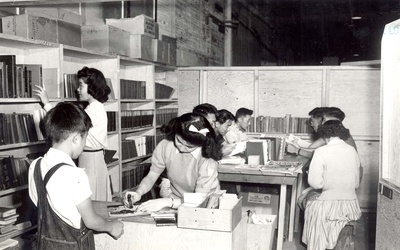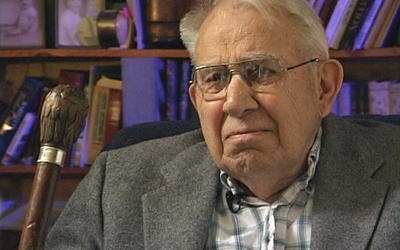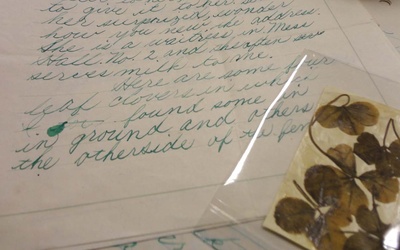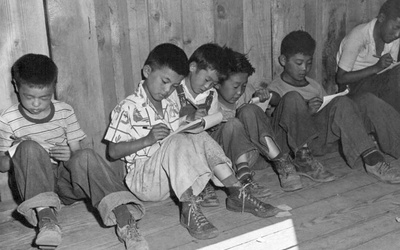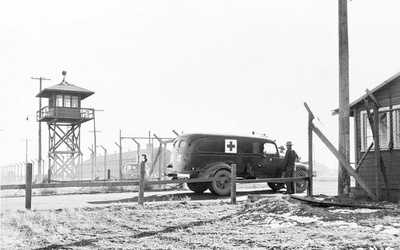Grandmother's Letter: Children and Books in Japanese American Internment Camps

Ms. Sachiko Aoki of the Children's Library Association in Tokyo told me about a letter written by a Japanese American that was published in a Japanese newspaper 10 or 20 years ago. The person spent time in an internment camp for Japanese Americans in the United States during World War II, and wrote that she "cannot forget the librarian who brought books to the camp." Encouraged by this letter, I began researching the lives of children in the internment camps and their relationship with books there.
*Reprinted from issues 133 to 137 of the quarterly magazine "Children and Books" (April 2013 to April 2014) published by the Children's Library Association.
Stories from this series
Chapter 2: The "Assembly Camp" Concentration Camp: From Spring to Fall 1942 (6)
April 6, 2015 • Yuri Brockett
Read Chapter 2 (5) >> 5. Towards the establishment of a library Movements to establish libraries began in each camp. Margaret Baba Yasuda, who was 17 years old at the time and was involved in the establishment of the library at the Puyallup camp, described the process as "a grassroots movement, volunteer work, and the result of people thinking that they had to do something rather than rot in the camp." 1 In the case of the Tanforan and Portland …
Chapter 2: The "Assembly Camp" Concentration Camp: From Spring to Fall 1942 (5)
March 30, 2015 • Yuri Brockett
Read Chapter 2 (4) >> Visitor One day, a messenger arrives at high school student Frank Yamasaki's barracks to tell him that he has a guest from outside. It seems that it wasn't raining in Puyallup that day. I wondered who it might be, and when I went there, I found out it was a teacher from Queen Anne High School. I wasn't particularly close to the teacher, so I was a little surprised. We shook hands and started walking, …
Chapter 2: The "Assembly Camp" Concentration Camp: From Spring to Fall 1942 (4)
March 23, 2015 • Yuri Brockett
Read Chapter 2 (3) >> 4. Connecting the "Meeting Place" with the Outside World Even if you live surrounded by barbed wire, if you can feel that there is a world outside, you can weave hope for the future. Breed continued to send books and letters, the second generation young people aspired to work in the school and library in the assembly center, the teacher sisters "kept delivering salami and the school," the high school student who had been in …
Chapter 2: The "Assembly Camp" Concentration Camp: From Spring to Fall 1942 (3)
March 16, 2015 • Yuri Brockett
Read Chapter 2 (2) >> 2. Start from what you can do and within your reach The adults around the children begin to do what they can, wherever they notice something or where there is a need. Even in this environment, the way they take the initiative to try to make it as livable as possible shows the indomitable and positive energy of the Issei and Nisei. It is spring, and it is in tune with the rhythm of nature. …
Chapter 2: The "Assembly Camp" Concentration Camp: From Spring to Fall 1942 (2)
March 9, 2015 • Yuri Brockett
Read Chapter 2 (1) >> Criticism By the time they reached high school, they had begun to criticize the government's methods, which were very different from the constitution that they had been taught in school to protect human rights. The following is a message left by Kaizo, a high school senior who is the older brother of one of Breed's children, Aiko Kubo. My world was crumbling before my eyes. From the moment I stepped into the barbed wire fenced …
Chapter 2: The "Assembly Camp" Concentration Camp: Spring to Fall 1942 (1)
March 2, 2015 • Yuri Brockett
Read Chapter 1 (4) >> ... We don't know exactly what life will be like in the camp, much less where we'll go afterwards. But we'll be among 4,000 Japanese Oregonians being housed at the Portland Camp, a former international livestock showroom. With limited work options available, many of us will likely just waste our time in boredom. In such a crowded environment, parents' biggest concern is their children: how to protect them from harmful influences and how to guide …

